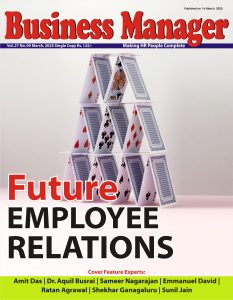The pandemic has caused CIOs to embed uncertainty and zero trust policies into their strategic IT design. This has led to the creation of a flexible and fluid IT model that could survive and adapt to such disruptions. Fluid IT model comprises of a modular structure that works with access and utility rather than underlying technology and applications. IT has evolved from databases and applications to serverless computing and cognitive customer experience. This has led to the creation of new skill-sets in the market. Organizations and learning & development programs have taken it upon themselves to build a broad-spectrum talent pool that could cater to current as well as future technology needs.
Organizations pose a big challenge post this turbulence – How to effectively tackle the changing IT landscape with on-demand resourcing, and how to create a flexible and hybrid workplace that can be deemed as future-ready and resilient.
Here are some tips that can help recruiters around the world to create a future-ready workplace:
1. Transition from Myopia to Acuity
The innovators need to think futuristic. Human Resources may find it challenging to bridge the gap between the technological innovations and the skill-set required. Rather than trying to keep pace with the ever-changing landscape, recruiters need to think one-step ahead. They need to strategically define organization’s IT objectives for the next five years and work their way back. They need to identify the kind of skill-sets needed to meet future demands. They need to constantly be updated about the changing needs, new technologies such as human experience platforms, digital twins, DevSecOps, etc. to figure out the skill-sets required.
2. Learning and Development
Once recruiters have figured out the capabilities needed for building next-gen IT experiences, it is time to create the talent-pool to meet those demands. Learning and development programs can be initiated across campuses, institutions, etc. to gather potential workforce. Physical classes combined with comprehensive digital and online courses can lead to better visibility, convenience, and campus-wide interest. The spread of courses can vary between current IT needs such as programmers, java developers, python programmers to AI platform experts, progressive web apps developers, and predictive analytics experts.
3. Upskilling the incumbent
Organizations need to rethink their business objectives and align their workforce in a strategic way to achieve optimum returns. The CIOs of today are harnessing learning into their frameworks and are known as Chief Learning Officers. They are the ones responsible to get optimum output out of the existing resource investment. There has to be a strategic approach to identify areas of improvement in the current spectrum of resources, and optimize them for building the workplace of the future. This can be achieved by initiating organization-wide up-skilling programmes with incentives and recognition. The incumbents of today can leverage these campaigns to boost their skills as well as enhance themselves to meet future demands.
4. Extending the vision
Hiring resources as and when needed, and building project silos will only cause ruptures that will have an irreversible effect on the organizations vision as well as ROI. Similarly, creating a vision for the future without extending it to the end-resources will cause serious damage too. The first step is to design an umbrella vision mapped with its IT demands and skill-set required. The next step is to announce it to the whole organization to bring everybody together to work towards achieving the same. Project leaders need to train their resources not only in technical skills but also in soft skills such as planning, decision-making, time management, etc. to enhance their understanding of the business-level objectives. This will lead to a workforce that works together to create experiences rather than products, and relationships rather than alliances.
In conclusion, human resources need to rethink and redesign their IT needs aligned with organizational strategic objectives, and create future-ready workforce in a next-gen fluid workplace that will help them to shape the experiences of tomorrow.























